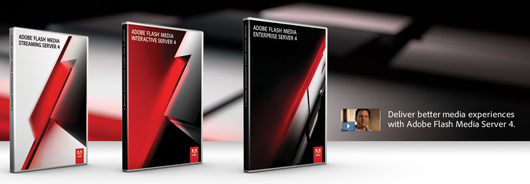This post is also available in: Russian
As multimedia content becomes globally popular, many online resources are seeking to enhance their pages with embedded video. Most of the Internet traffic is now generated by video content. This is a driver behind Adobe’s successful market indicators, as some of its products (primarily Flash Media Server and Flash Player) are focused at high-quality video publishing on the Web. If your Web resource has no video yet, you should at least consider its effect on the popularity of your site. There are many ways to publish video content. In this context, setting aside third-party hosting, you’d have to face the choice of a media server. It delivers video content from your server to the client application. In this article, we’ll discuss the most popular media servers and their use.
From a technical point of view, the task of a media server is quite simple. Having received a request for video content (or its segment), the media server retrieves the video from the file system, splits it into fragments and generates a video stream. In case of online streaming, file system access is not required. The media server can handle hundreds and even thousands of concurrent streams, so it should have effective mechanisms for content caching. Stability of media server operation is key to user experience. No one would watch videos with constant interruptions and failures.
Flash Media Server
Adobe Flash products are pioneers and trend setters in the online video industry. The ubiquity of online video has earned massive popularity to the Flash platform. To publishers Adobe offers a variety of Flash Media Server configurations. Also, many companies offer hosting of Flash Media Server applications (e.g., Amazon, Influxis). We have previously discussed how to select an optimum configuration and estimate the number of licenses you need. The end user is actually agnostic of the media server you use, being sensitive only to stability and reliability of its operation.
For the owners of Internet resources, selection of video to be published may be not so easy. It’s safe to say that Adobe Flash Media Server is the most technically advanced media server. The only downside is that its price is relatively high. So, when making your choice, ensure that Adobe Flash Media Server fits into your budget. Here are the key benefits worth your attention:
- Technical superiority. There are many small features that are not critical, but can bring benefit to your site.
- Prevalence of technology. It is much easier to find experts in Flash Media Server than in any other media server. If you do not plan to delve into development yourself, external services would be cheaper.
- Reliability. Flash Media Server has a multi-year track record of continuous development and improvement, offering minimum server downtime and ensuring a steep learning curve for you.
- Simplicity. A key benefit of Flash Media Server is its extensive documentation, giving details of the most sophisticated uses and requiring the minimum actions to achieve the desired result.
- Content protection. Using Adobe’s proprietary technologies such as RTMPE and Flash Access, you can meet the requirements of most copyright holders and distribute their content from your site.
- Unique feature set. Having reached stable quality of its standard features, Adobe is making every effort to introduce innovations to new versions of Flash Media Server. Some time ago, Adobe acquired Amicima, a developer of P2P stack for online communications. Flash Media Server latest version 4 (Enterprise Configuration) allows you to manage P2P content distribution and multicast your content.
Summing up, Adobe Flash Media Server will empower you with the best technical solution at the minimum effort, but you should pay a good deal for this. Also note that each new Flash Media Server release adds new fantastic functionality.
Wowza Media Server
Probably the only product that has at least some advantages over Adobe Flash Media Server is the Wowza Media Server. It is significantly cheaper and offers additional support of new platforms using their native protocols and formats (i.e., it acts as a transcoder, or rather a repacker). Due to this, Wowza is particularly effective for iPhone / iPad streaming, as it supports content segmentation based on Apple’s HTTP Streaming specifications. Still, for VoD content delivery, it is easier to use HTTP, with ByteRange requests for content navigation. Unlike the Adobe documentation, Wowza’s is less extensive and is smoothly spread over the forum which is also used to provide technical support.
Red5
Red5 is an open source Flash Media Server, so you can make any changes to the media server logic. The downside is higher staff expertise required, especially the ability to understand others’ code.
ErlyVideo
A nice Flash Media Server implementation is ErlyVideo, developed in Russia. A compact set of nice features can make it your solution of choice.
A popular approach is to use third-party Flash Media Servers (for instance, Wowza) to pre-process video streams (e.g., RTSP -> RTMP or HTTP PD -> RTMP, as ErlyVideo does) and then distribute content using original Adobe Flash Media Servers, to ensure stable delivery.
Finally, here is the list of other alternative media server implementations:
If you use third-party media servers, please be careful in assessing their performance, stability and reliability.
